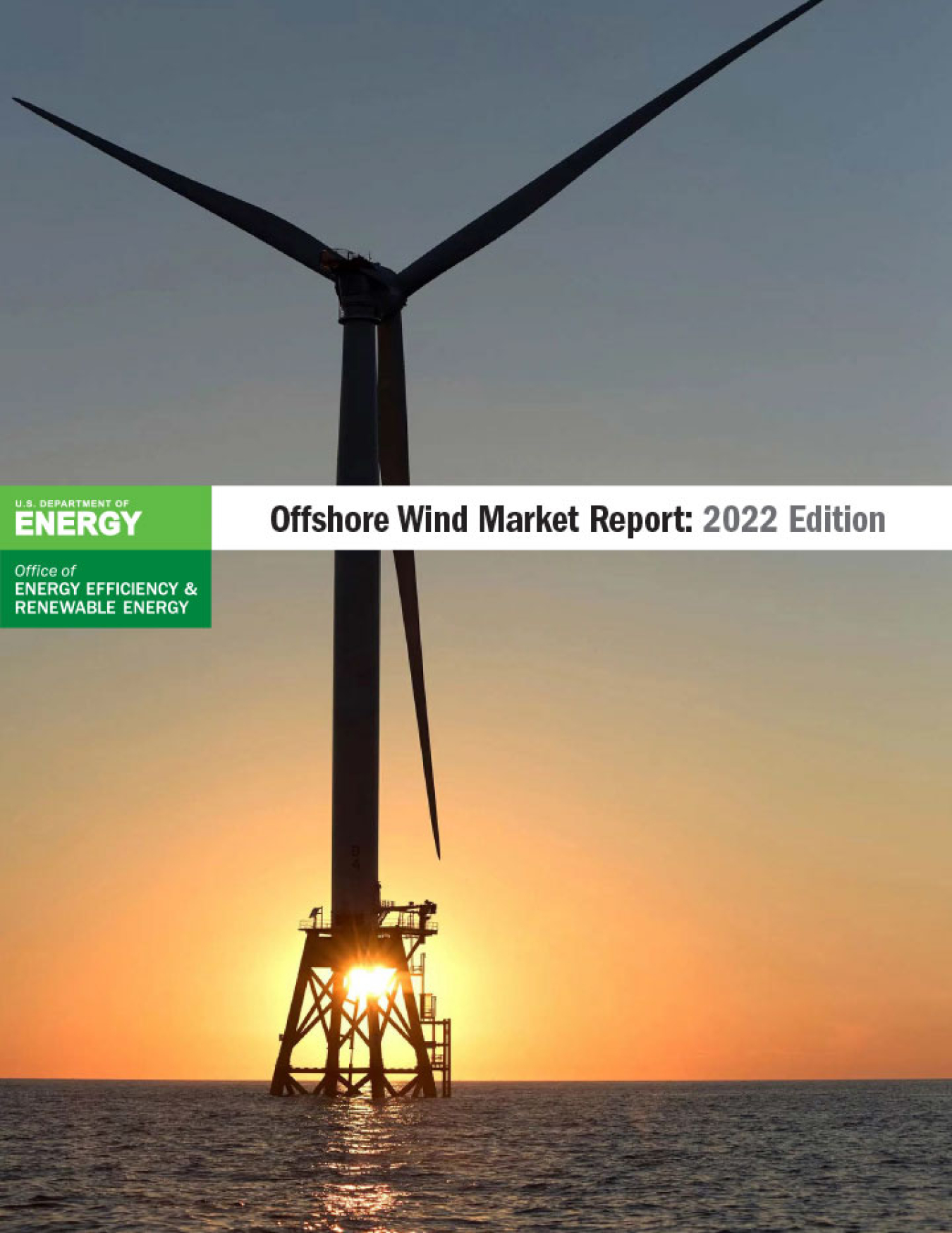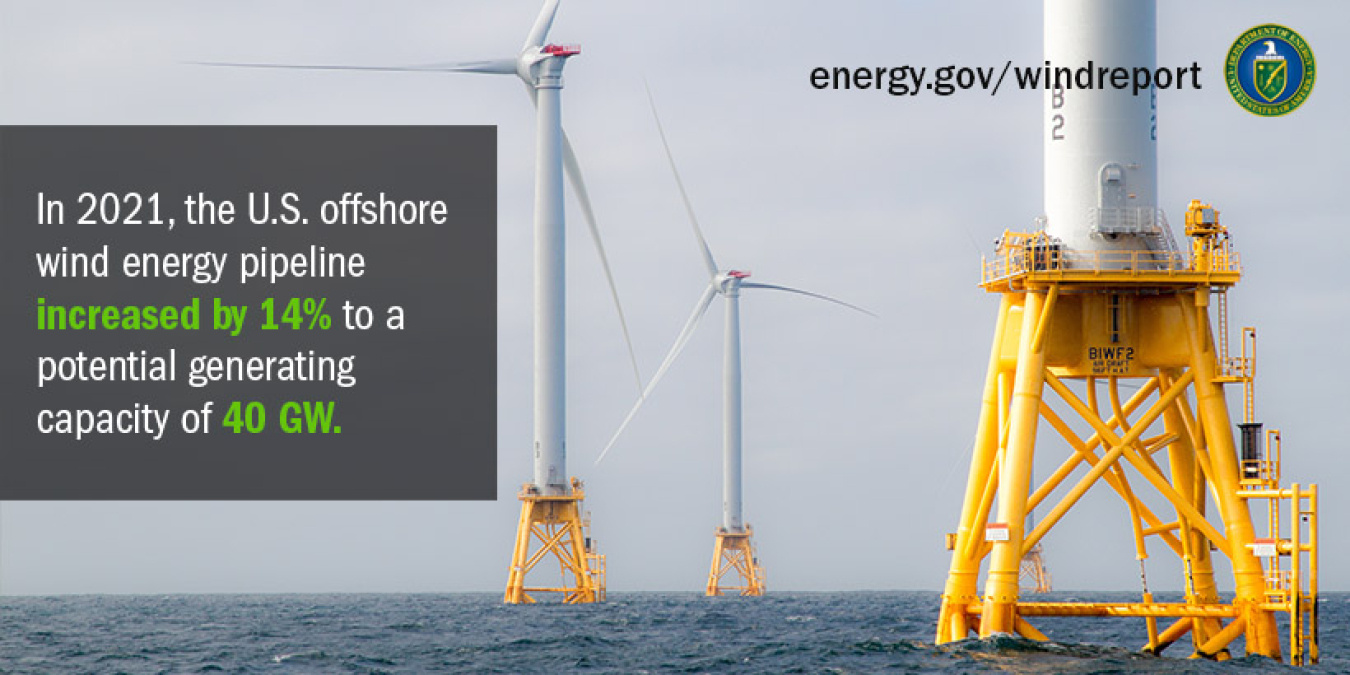Readers Note: To see the latest Offshore Wind Market Report, view the Offshore Wind Market Report: 2023 Edition.
The 2022 edition of the Offshore Wind Market Report provides offshore wind policymakers, regulators, developers, researchers, engineers, financiers, supply chain participants, and other stakeholders with up-to-date quantitative information about the offshore wind market, technology, and cost trends in the United States and worldwide.
The report covers the global offshore wind industry for the 2021 calendar year and the most significant U.S. domestic industry progress and events from January 1, 2021, through May 31, 2022.
KEY FINDINGS
Falling offshore wind prices, state-level commitments, and an unprecedented expansion into new leasing areas drove the U.S. offshore wind pipeline to grow 13.5% over the previous year, with 40,083 megawatts (MW) now in various stages of development. The pipeline includes two projects in operation totaling 42 MW, two projects under construction totaling 932 MW, and 18 projects in the permitting phase totaling 18,581 MW. Over the last year, the Biden-Harris Administration significantly expanded areas of the country available to offshore wind development, with six new lease areas auctioned in New York Bight, two new lease areas auctioned in Carolina Long Bay, and plans to lease new areas in California, Gulf of Mexico, Central Atlantic, Oregon, and Gulf of Maine.
The estimated levelized cost of energy for commercial-scale offshore wind projects in the United States declined 13% to $84/MW-hour (MWh) on average, with a range of $61/MWh to $116/MWh.
Global offshore wind installations in 2021 had a record year for deployment with 17,398 MW of new projects commissioned, pushing global installed capacity past 50 GW. Three floating offshore wind projects came online in 2021, totaling 57.1 MW, including the largest floating offshore wind project built to date—the 50 MW Kincardine Offshore Wind Farm in Scotland. With these additions, the total global pipeline for floating offshore wind energy grew doubled in 2021 to 60,746 MW.
The industry continues its trend toward larger turbines to reduce per-megawatt project costs. The average offshore wind turbine capacity installed in 2021 was 7.4 MW, slightly down from 7.6 MW in 2020, but still significantly higher than 3.3 MW in 2011. All three major European manufacturers of offshore wind turbines are working on developing 15-MW-class wind turbines with rotor diameters spanning up to 236 meters (compared to 158-meter-average rotor diameters in 2021), with plans for commercial production between 2022 and 2024.


